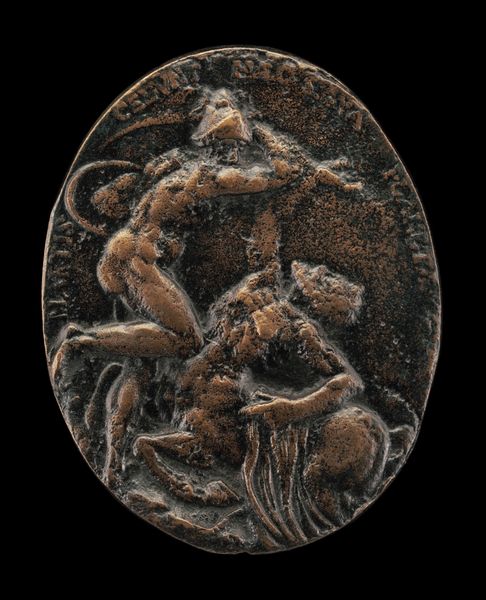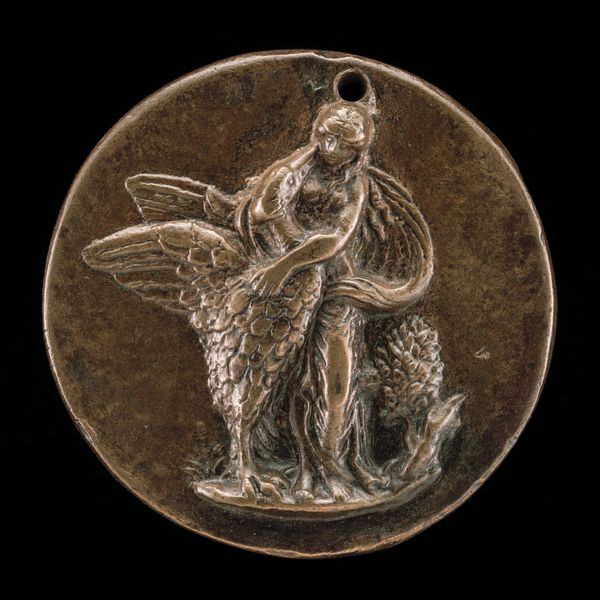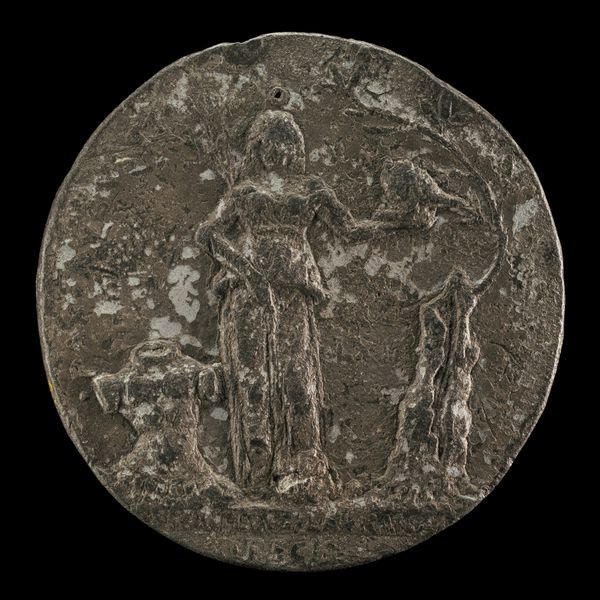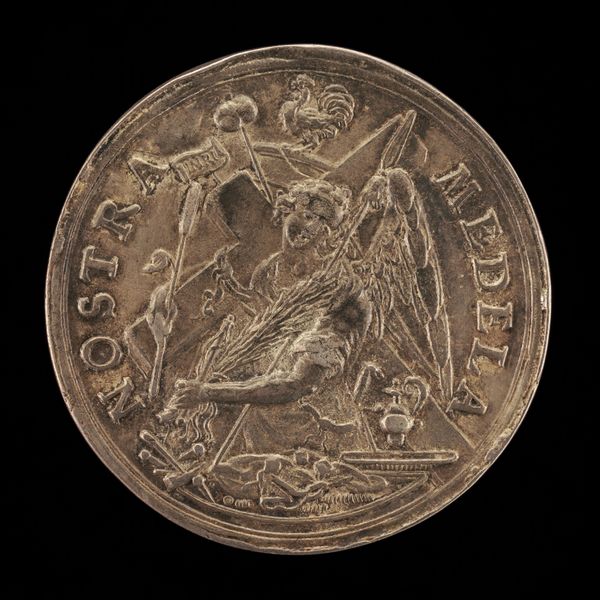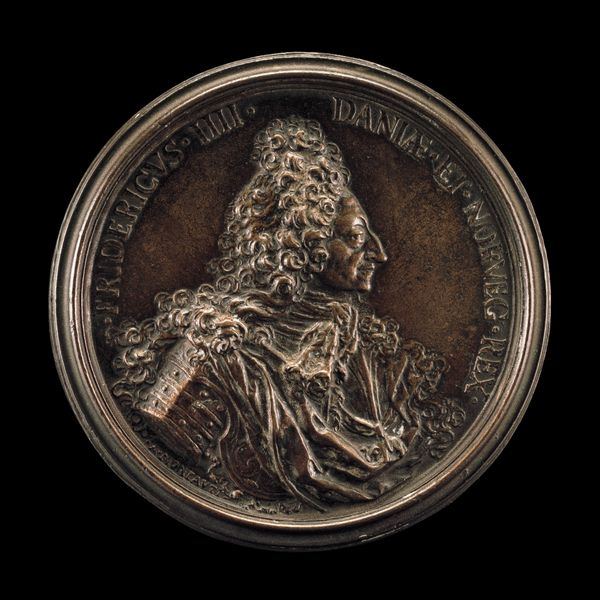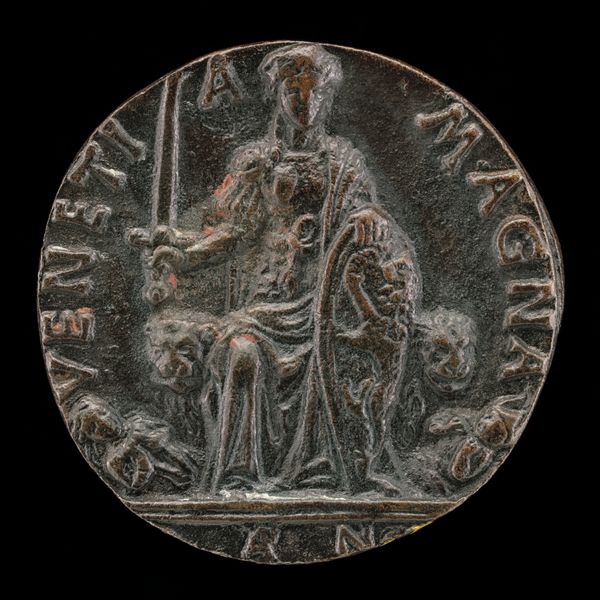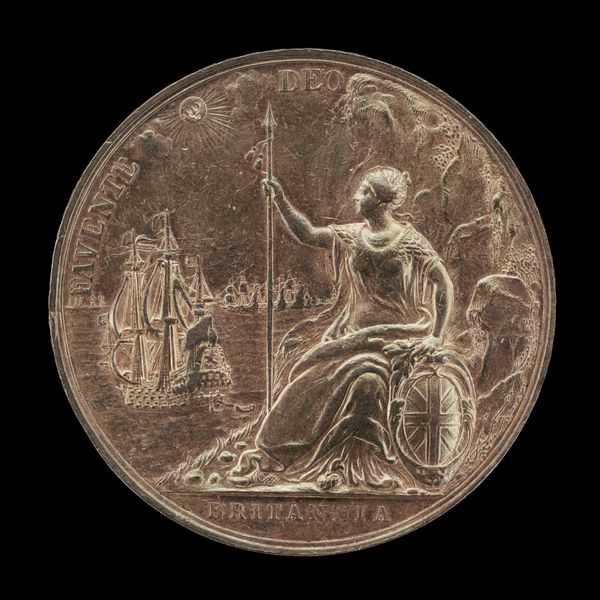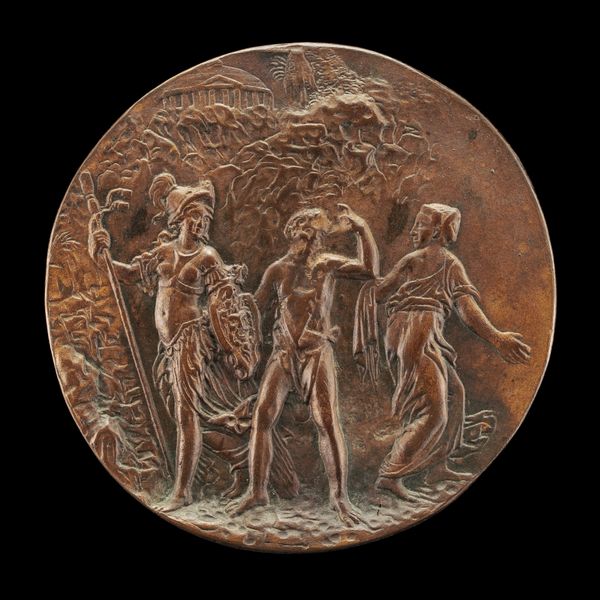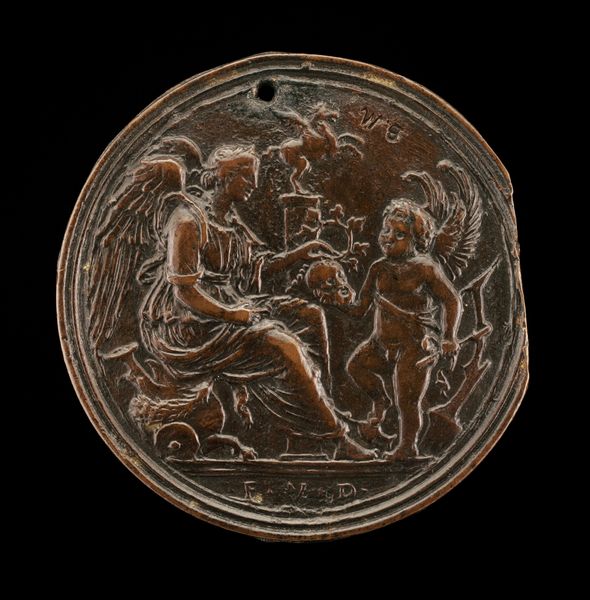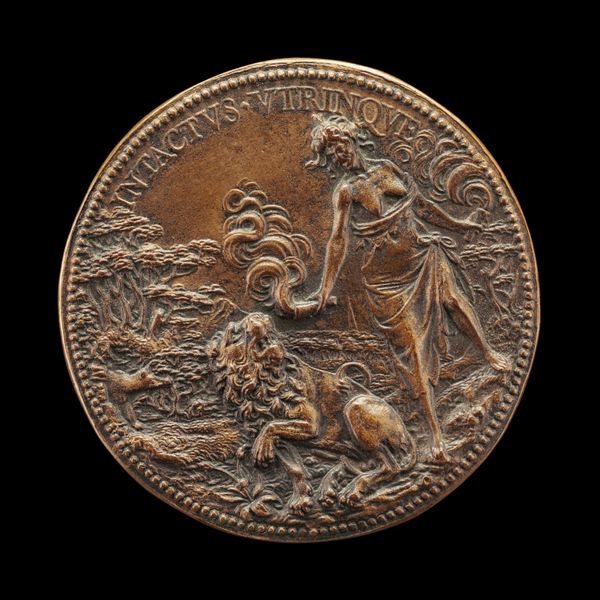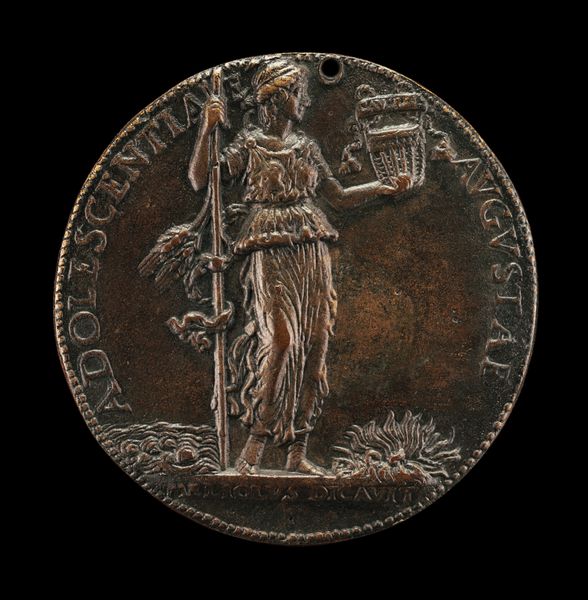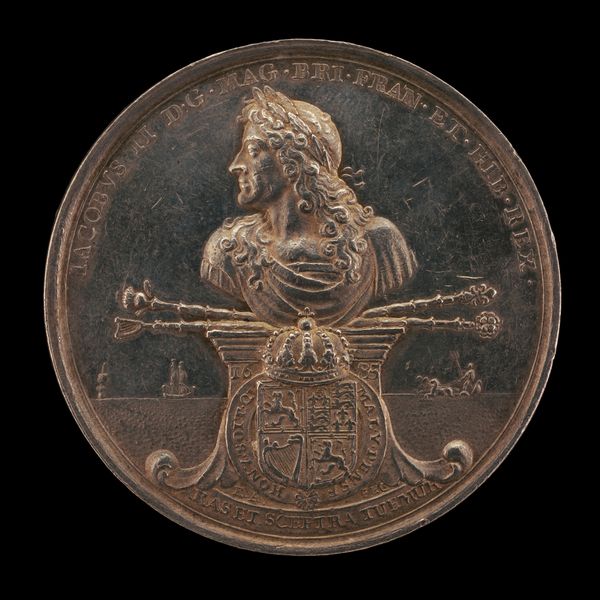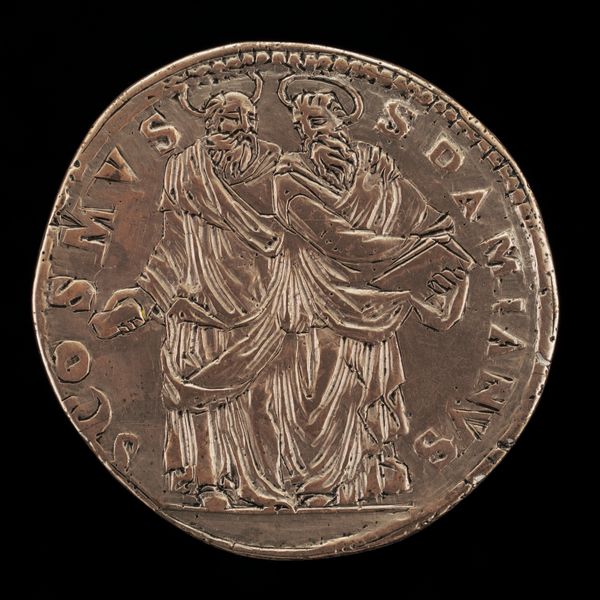![Henri IV, 1553-1610, King of France 1589, as Mars [obverse] by Nicolas Guinier](/_next/image?url=https%3A%2F%2Fd2w8kbdekdi1gv.cloudfront.net%2FeyJidWNrZXQiOiAiYXJ0ZXJhLWltYWdlcy1idWNrZXQiLCAia2V5IjogImFydHdvcmtzL2YwMzY0ZGVhLTY3NGUtNDA3My04ZmUxLWE3YzI5OWUwZTRmMi9mMDM2NGRlYS02NzRlLTQwNzMtOGZlMS1hN2MyOTllMGU0ZjJfZnVsbC5qcGciLCAiZWRpdHMiOiB7InJlc2l6ZSI6IHsid2lkdGgiOiAxOTIwLCAiaGVpZ2h0IjogMTkyMCwgImZpdCI6ICJpbnNpZGUifX19&w=3840&q=75)
Henri IV, 1553-1610, King of France 1589, as Mars [obverse] before 1610
0:00
0:00
bronze, sculpture
#
portrait
#
sculpture
#
bronze
#
11_renaissance
#
sculpture
Dimensions: overall (oval): 9.7 x 7.6 cm (3 13/16 x 3 in.) gross weight: 244 gr (0.538 lb.) axis: 12:00
Copyright: National Gallery of Art: CC0 1.0
Curator: This intriguing bronze sculpture presents us with Henri IV, King of France, depicted as Mars, the Roman god of war. It’s attributed to Nicolas Guinier and thought to have been created before 1610. Editor: It’s so interesting— the darkness of the bronze gives it an intense, almost somber mood, but the regal profile is undeniably commanding. You immediately feel this powerful tension. Curator: Absolutely. The decision to cast Henri IV in the guise of Mars speaks volumes about the image he wished to project. He wasn't just a king; he was presenting himself as a strong, even divinely appointed, leader ready for battle. Editor: Right, that classic use of allegory and appropriation! It's always struck me how rulers manipulate images. It’s not only about personal vanity. I think it shows this calculated need for rulers to establish themselves in history and bend power through mythmaking. This is political image-craft, pure and simple! Curator: Exactly! And look closer at the detail: the craftsmanship in the helmet, the delicate engraving of the text. Each aspect of its creation adds to its appeal as not just political propaganda but as a display of artistic prowess and royal authority. Consider too how these medallions served as gifts, miniature proclamations distributed among elites, shaping perceptions across political circles. Editor: Definitely a tool. Bronze was itself symbolic, implying enduring strength. But does this “strength” risk veering into an endorsement of militarism or a hypermasculine idea of kingship? It might resonate one way to audiences who embrace strongman personas, and completely alienate other viewers seeking less combative leadership. Curator: I believe such a question helps to contextualize his historical rule. As we consider the power of representation, one has to ask how the image has aged, who has used it and for what ends, to then see it within a continuous social discourse about Henri and French monarchy more broadly. Editor: What an interesting debate to reflect on even centuries later: to untangle representation, its historical meanings, and all its latent present-day social projections. This really prompts thought on how potent— and slippery—iconography really is!
Comments
No comments
Be the first to comment and join the conversation on the ultimate creative platform.
